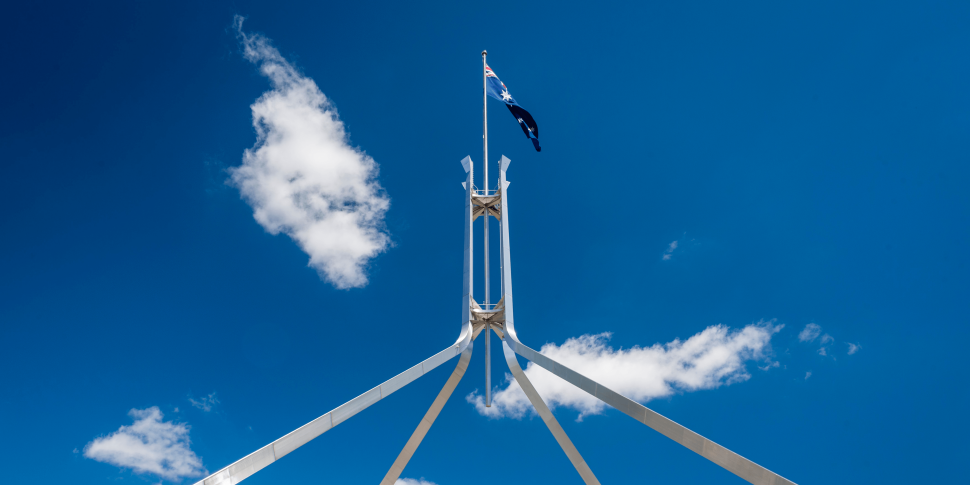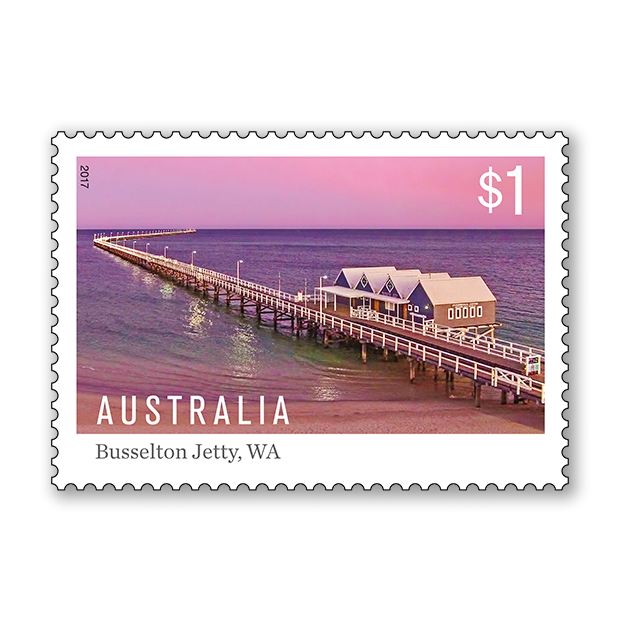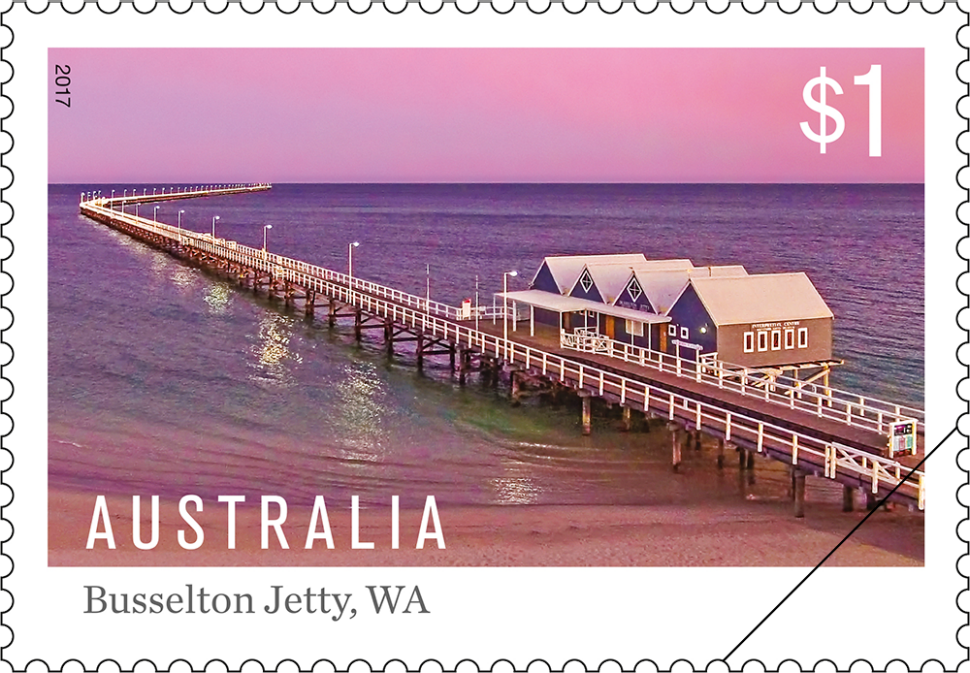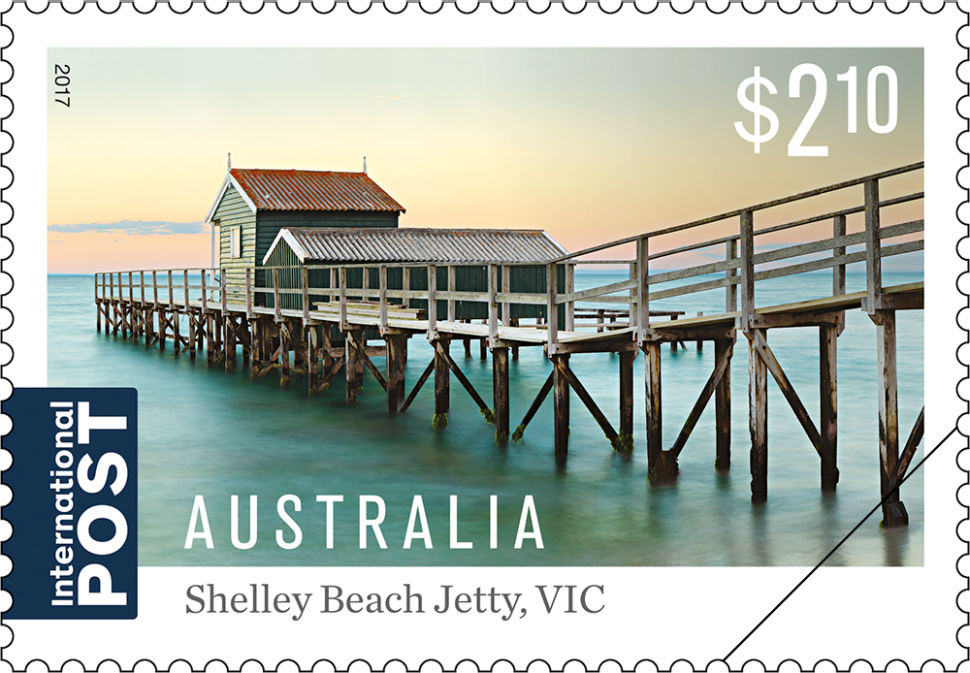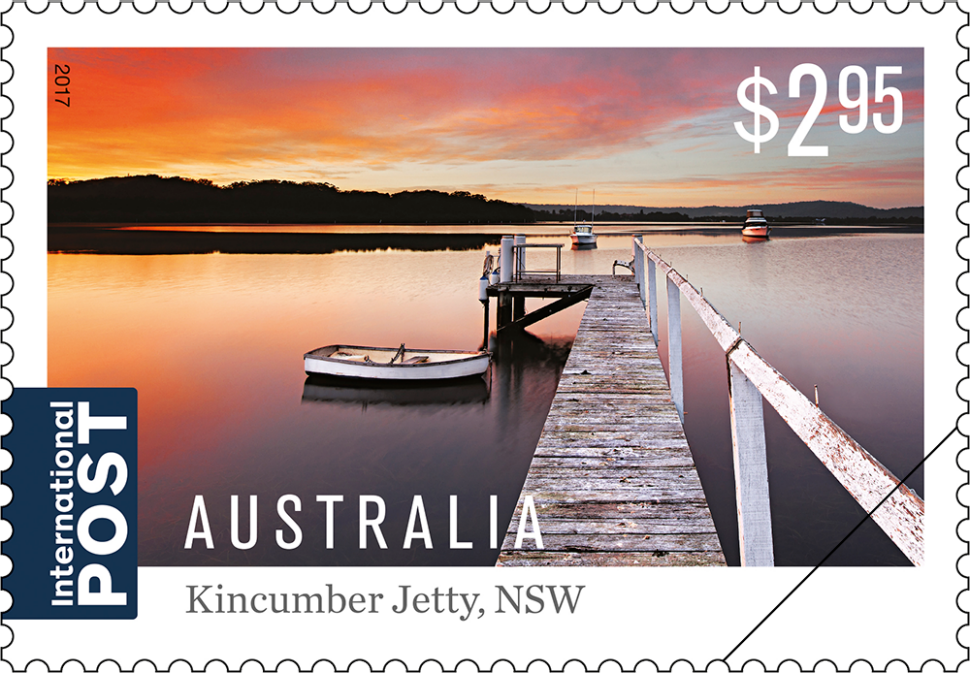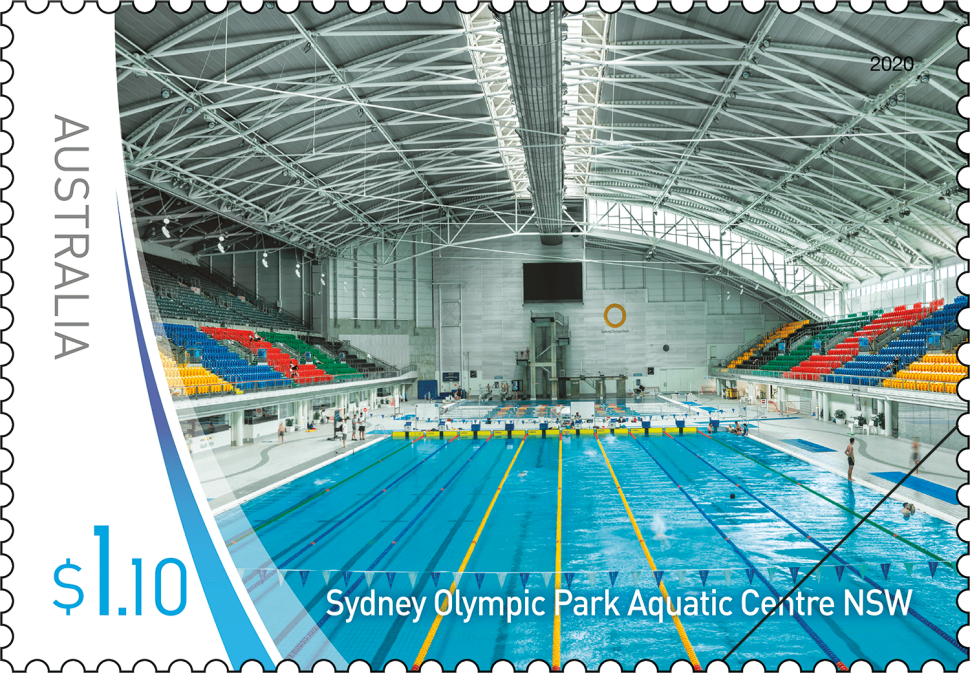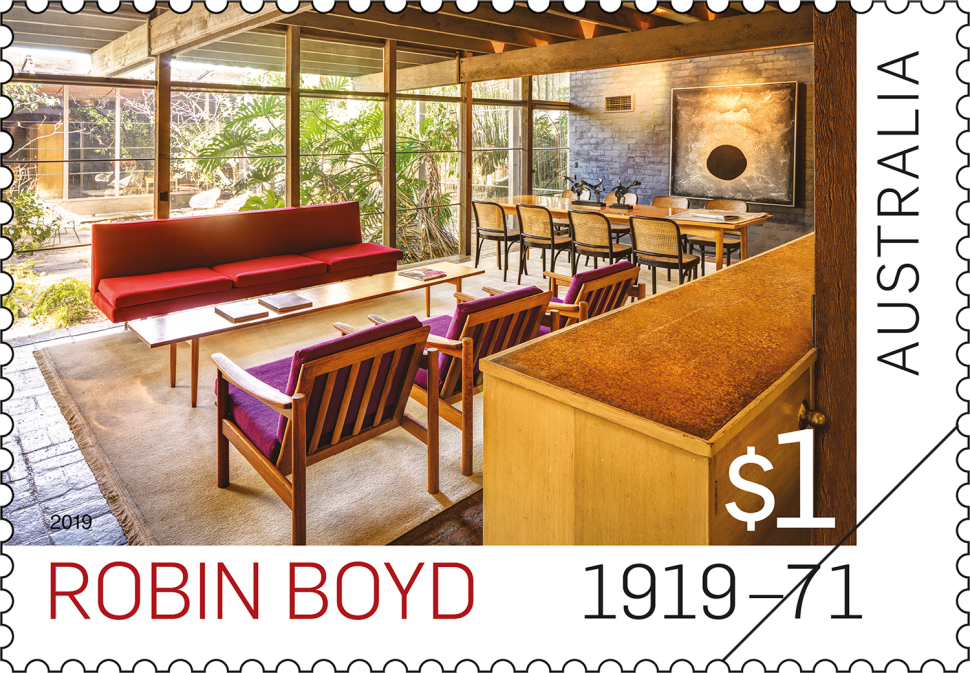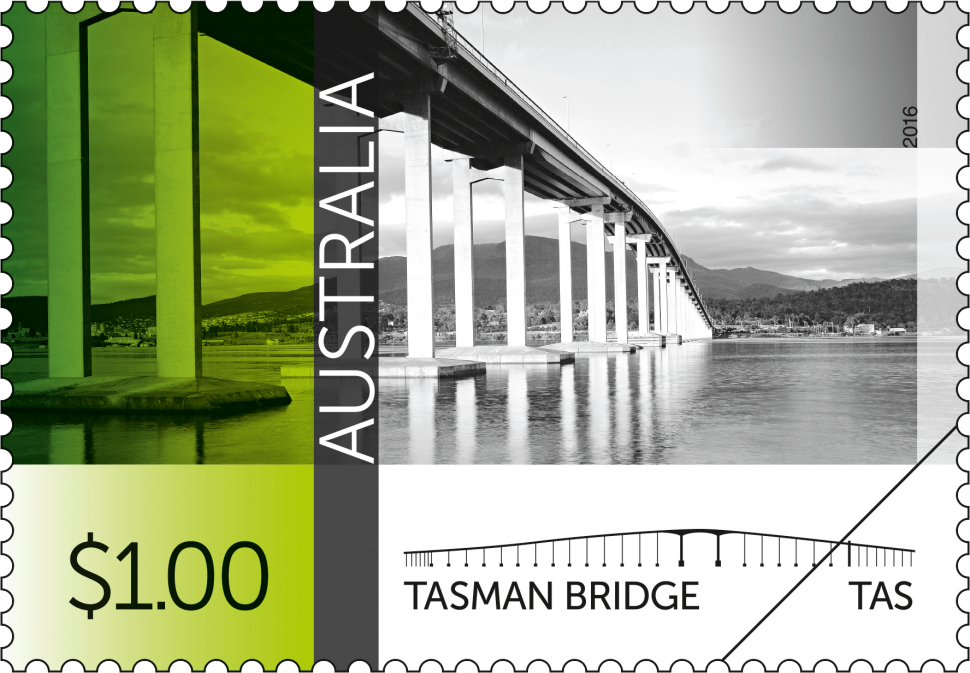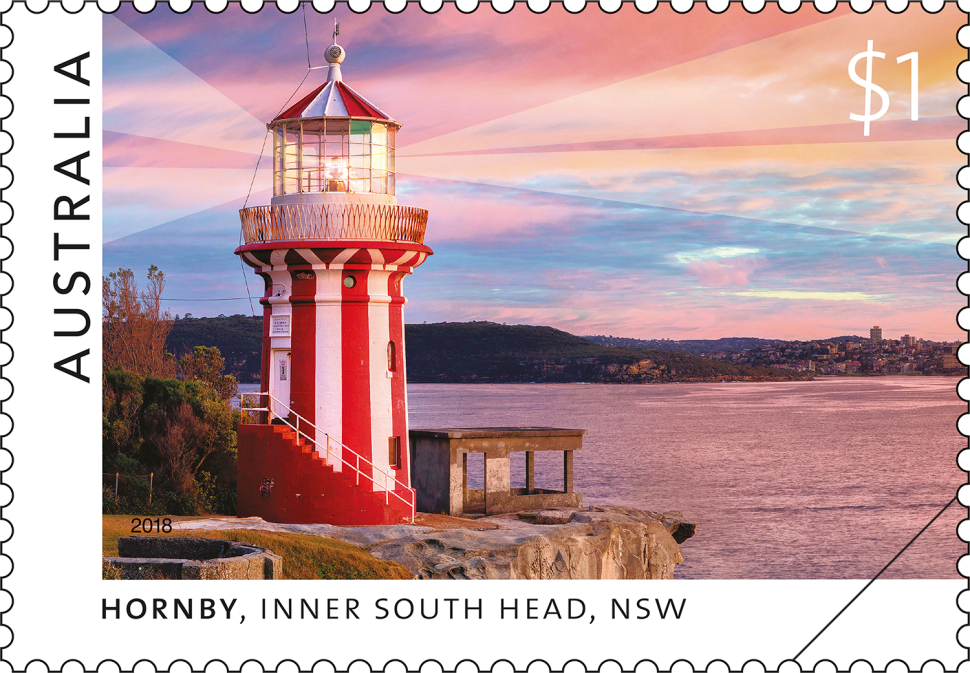Many of the countless jetties and piers that punctuate Australia’s coastline and waterways were originally built to moor vessels transporting goods and passengers. While some have since fallen into disuse, others are still popular for recreational fishing, diving, snorkelling and other tourist activities.
The four featured jetties from around the country, all wooden, include those at Busselton, Western Australia; Tumby Bay, South Australia; Shelley Beach near Portsea, Victoria; and Kincumber, New South Wales.
The striking stamp designs use photography to showcase the dramatic light and colour of each scene.
Designer
Andrew Hogg Design
Products released in this issue
- First day cover (blank, gummed, self-adhesive)
- Maxicards
- Minisheet
- Stamp pack
- Postcards (Busselton Jetty and Shelley Beach Jetty)
Technical specifications
- Issue date
- 21 February 2017
- Issue withdrawal date
- 31 August 2017
- Denominations
- 2 x $1, 1 x $2.10, 1 x $2.95
- Stamp design
- Andrew Hogg Design
- Product design
- Andrew Hogg Design
- Printer
- McKellar Renown
- Paper - gummed
- Tullis Russell Red Phos
- Paper - self-adhesive
- C100, RAF Unik
- Printing process
- Offset lithography
- Stamp size
- 37.5mm x 26mm
- Perforations
- 13.86 x 14.6
- Sheet layout
- Module of 50
- FDI postmark
- Busselton WA 6280
- FDI withdrawal date
- 21 March 2017
The city of Busselton is situated on Geographe Bay on the southwest tip of Western Australia. One of the earliest settlements in the state, the town was established as a major port for the transportation of timber. At nearly two kilometres in length, the Busselton Jetty is the longest wooden jetty in the world, so constructed because Geographe Bay was too shallow for ships to moor closer to shore. The jetty commenced construction in 1853 and was extended several times into the 1960s before closing to ships in 1972.
In recent years the historic jetty has been rebuilt and renovated and is now a popular attraction, with the old rail line along the pier now carrying tourists to an underwater observatory near the end of the jetty, which is listed in the State Register of Heritage Places
Tumby Bay is a farming town situated on the Spencer Gulf on the eastern coast of Eyre Peninsula in South Australia. The town was established as a shipping port for wheat, wool, copper and talc and the 133 metre long jetty, the second on the Peninsula, was constructed in 1874 to ship anticipated supplies of copper from the nearby Burrawing Mine. The jetty was extended in 1905 and 1909, and dismantled for safety reasons in 1999.
The current wooden jetty was constructed in 1908–09 and is well known as a diving destination for viewing sea creatures including the leafy seadragon, nudibranchs, seahorses, octopuses and rays.
Portsea is a popular resort town located 95 kilometres from Melbourne near the end of the Mornington Peninsula and close to the Heads, the region of water connecting the protected Port Phillip Bay with the wild ocean of Bass Strait.
The picturesque private jetty on the stamp is located at Shelley Beach, a small secluded beach between Portsea and Sorrento.
The jetty at Kincumber is located on the Brisbane Water, an estuary in the Central Coast region north of Sydney. The small wooden jetty can be found from the walk and cycle track between the towns of Kincumber and Davistown. The scenic estuary is an important region for birds such as the Bush Stone Curlew, Regent Honeyeater and Swift Parrot.
The nearby Kincumba Mountain Reserve is a major attraction. Kincumber was one of the earliest settlements on the Central Coast, established to supply wood from the surrounding rainforest for the growing colony of Sydney in the early 19th century. Meeting the needs of water transport, boat building was also an important industry.
This content was produced at the time of the stamp issue release date and will not be updated.
We don’t want you to miss out on opportunities that support your collecting and make it even more enjoyable.
Benefits:
• Exclusive offers
• Pre-order opportunities
• Offers a great collecting experience
your collectables
